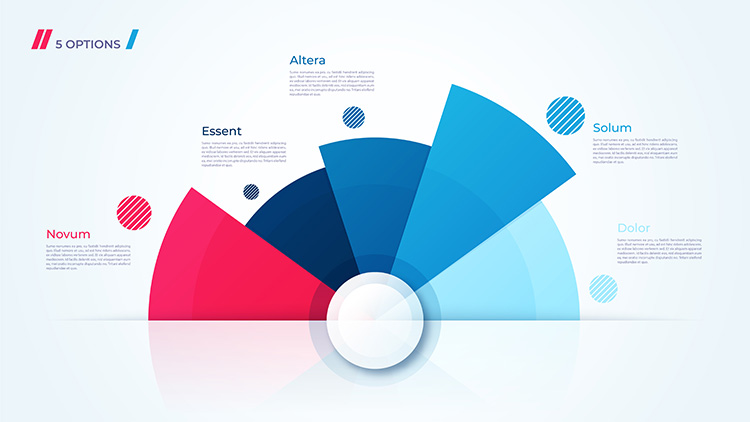AI & ML DevelopmentAbout this Services
Improve Machine Learning algorithms by studying underfitting, overfitting, training, validation, n-fold cross validation, testing, and how hyperparameters could improve performance. Perform linear and logistic regressions in Python.
1. Customized Drone Building Services
1.1 End-to-End Drone Design and Development
- Complete design and development of drones tailored to specific customer requirements, from concept to production.
1.2 Drone Customization Services
- Modify existing drones or build from scratch to meet custom specifications such as payload capacity, endurance, and specialized sensors.
1.3 Prototype and Testing Services
- Build and test prototypes based on client requirements, ensuring all performance metrics are met before mass production.
1.4 Drone Assembly and Integration
- Assemble customized drones with carefully selected components, including motors, batteries, cameras, and sensors, ensuring optimal performance.
1.5 Payload Integration
- Custom payload integration for drones, including cameras, LIDAR, thermal imaging sensors, and other specialized equipment based on industry needs.
1.6 After-Sales Support and Maintenance
- Provide technical support, troubleshooting, repairs, and upgrades for customized drones after delivery to ensure peak performance.
1.7 Training and Documentation
- Offer hands-on training sessions for operating customized drones, as well as user manuals and guides for clients to manage their drones.
1.8 Regulatory Compliance and Certification
- Assist with navigating and securing necessary certifications for drone operations, ensuring compliance with aviation laws and regulations (such as FAA, EASA, etc.).
1.9 Drone Software Development
- Custom software solutions for flight planning, navigation, autopilot systems, and data analysis tailored to specific customer use cases.
2. Drone Building Techniques
2.1 CAD and 3D Modeling
- Use of advanced CAD software for designing custom drone frames and components, optimizing for weight, aerodynamics, and durability.
2.2 3D Printing for Prototyping
- Rapid prototyping using 3D printing technology for creating custom drone parts, ensuring quick iteration during design and testing phases.
2.3 Aerodynamic Optimization
- Techniques for optimizing drone design for minimal air resistance and improved flight stability, resulting in increased flight times and efficiency.
2.4 Composite Material Integration
- Incorporating lightweight yet strong materials such as carbon fiber and fiberglass into drone builds to improve durability and payload capacity.
2.5 Precision Engineering
- Use of CNC machining and other precision techniques to ensure all components are built with high accuracy for seamless integration and performance.
2.6 Electrical and Mechanical Integration
- Advanced techniques for integrating electrical components (motors, ESCs, batteries) and mechanical parts (propellers, landing gears) into the drone.
2.7 Battery Optimization and Power Management
- Custom power systems designed for optimal flight time and energy efficiency, integrating advanced lithium polymer (LiPo) or lithium-ion batteries.
2.8 Autonomous Flight and Control Systems
- Implementation of autopilot systems, including GPS, inertial measurement units (IMU), and onboard processors to enable autonomous flight.
3. Drone Building Tools and Software
3.1 CAD Tools (Computer-Aided Design)
- AutoCAD, SolidWorks, Fusion 360: Used for creating precise designs of drone frames, components, and enclosures.
3.2 3D Printing Tools
- Ultimaker Cura, Simplify3D: Software used for 3D printing custom parts for drone prototypes or final production.
3.3 Flight Control Software
- Mission Planner, QGroundControl, PX4: Software platforms used to program and control flight paths, navigation, and autopilot systems.
3.4 Simulation Tools
- X-Plane, DroneKit, Gazebo: Simulation software to test drone designs and control algorithms in a virtual environment before real-world deployment.
3.5 Autopilot Firmware
- ArduPilot, PX4 Autopilot: Open-source firmware used for autonomous control of drones, including flight stabilization and mission planning.
3.6 Payload Integration Software
- Flir Tools (for thermal imaging), Pix4D (for mapping and photogrammetry): Software platforms used to control and integrate specialized drone payloads.
3.7 Battery Monitoring Software
- BLHeli, Betaflight: Software for monitoring battery health and optimizing power consumption during drone flights.
3.8 Communication and Control Systems
- RFLink, LoRa, Wi-Fi: Technologies and software for maintaining a reliable communication link between drones and control stations over long distances.
4. Technologies Used in Drone Building
4.1 GPS and Navigation Systems
- Integration of advanced GPS modules for precise navigation and waypoint-based flight planning.
4.2 IMU (Inertial Measurement Units)
- Sensors that provide data on the drone’s orientation, velocity, and acceleration for stable flight control.
4.3 Artificial Intelligence and Machine Learning
- AI-driven systems for autonomous navigation, obstacle avoidance, real-time data processing, and decision-making.
4.4 LIDAR and Advanced Sensors
- Integration of LIDAR, infrared, and ultrasonic sensors for obstacle detection, terrain mapping, and environmental awareness.
4.5 High-Efficiency Motors
- Brushless motors optimized for efficiency, endurance, and thrust, allowing drones to carry heavier payloads and fly longer distances.
4.6 Advanced Propulsion Systems
- Use of advanced propeller designs and motor combinations to achieve optimal thrust-to-weight ratios and enhance maneuverability.
4.7 FPV (First Person View) Technology
- FPV cameras and goggles for real-time video transmission, allowing pilots to control drones with a first-person view.
4.8 5G Connectivity
- Use of 5G networks for real-time communication and control of drones over long distances, providing low-latency video streaming and data transfer.
5. Different Types of Drones We Build
5.1 Fixed-Wing Drones
- Long-endurance drones designed for covering large distances, suitable for mapping, surveillance, and agricultural monitoring.
5.2 Multi-Rotor Drones (Quadcopters, Hexacopters, Octocopters)
- Versatile drones used for aerial photography, videography, and industrial inspection, offering excellent stability and control.
5.3 Hybrid VTOL (Vertical Take-Off and Landing) Drones
- Drones that combine the benefits of fixed-wing flight with multi-rotor capabilities, offering long-range flight with the flexibility of vertical take-off and landing.
5.4 Racing Drones
- High-speed drones designed for competitive racing, built for agility, speed, and real-time FPV performance.
5.5 Agricultural Drones
- Customized drones used for crop monitoring, spraying, and precision agriculture, equipped with sensors to analyze plant health and optimize crop management.
5.6 Inspection and Surveying Drones
- Drones equipped with specialized cameras and sensors for industrial inspection, surveying, and asset management in industries like oil and gas, construction, and utilities.
5.7 Delivery Drones
- Drones designed for transporting goods, with customized payload capacities and delivery mechanisms, used in logistics, e-commerce, and medical supply deliveries.
5.8 Underwater Drones (ROVs)
- Remotely operated underwater vehicles for exploring and inspecting submerged structures, pipelines, and marine ecosystems.
5.9 Surveillance and Security Drones
- Drones built for security and surveillance tasks, equipped with thermal cameras, night vision, and AI-powered analytics for real-time monitoring.
5.10 Medical Drones
- Drones designed for delivering medical supplies, including blood, organs, and medicines to remote or disaster-struck areas.
6. Drone Lifecycle
6.1 Concept and Requirement Gathering
- Understanding client needs and defining the scope, purpose, and technical specifications for the custom drone.
6.2 Design and Prototyping
- Creating drone designs using CAD software, developing prototypes through 3D printing, and iterative testing.
6.3 Development and Integration
- Assembling the drone and integrating electronic components, sensors, and software systems.
6.4 Testing and Calibration
- Performing extensive testing to ensure the drone meets flight, safety, and performance requirements, including stability and payload capability.
6.5 Deployment and Training
- Delivering the customized drone to the client and providing necessary training and documentation for operation and maintenance.
6.6 Maintenance and Upgrades
- Offering regular maintenance, firmware updates, and part replacements to ensure the longevity and optimal performance of the drone.
It is a long established fact that a reader will be distracted by the readable content of a page when looking at its layout. The point of using Lorem Ipsum is that it has a more-or-less normal distribution of letters, as opposed to using ‘Content here, content here’, making it look like readable English. Latin words, combined with a handful of model sentence structures, to generate Lorem Ipsum which looks reasonable.
Application Areas
Technologies That We Use
- JavaScript
- Python
- Java
- C/CPP
- PHP
- Swift
- C# (C- Sharp)
- Ruby
- SQL


